BACK
TO WEATHER-BLOG MENU
New!
Fine Art Prints & digital images for sale-
Welsh Weather
& Dyfi Valley landscapes Slide-Library - Click HERE
| According
to the Met Office, the UK has had the driest first six months of any
year since 1929 - that's 80 years! Neither would I gainsay them (that's
a popular sport in some sections of the media but not on here): it was
a very
dry winter and spring in this part of Wales and by the time I returned
from Orkney on June 19th the soil in the veg-garden was dust for the
first couple of inches, the rainwater catching system was all but empty
and I was forced to make do by hauling water from the river with a
3-gallon bucket and rope - a job necessitating an early start as the
traffic at 0600 is almost non-existent, a good thing when working from
the side of a normally busy main road! More on the garden below. The
other drought is one familiar I guess to many right now - lack of paid
work has been a chronic problem of late and is really starting to bite
hard. Luckily, the rains have now arrived and the garden is
cranking up into production mode, so I'll not starve - and I'll keep
this blog going if it's the last thing I do. Thanks for the supportive
emails on that front, by the way! This post starts before my Orkney excursion as what has been a rare sight this year burst into life on the late afternoon of June 8th - a convective storm. Convective weather has been very thin on the ground in 2010, to the extent that the last time I heard thunder was on November 25th 2009! I'd been over by Aberdyfi for the afternoon and on the way back I stopped at Gogarth, where a path leads out into the Estuary. With the cell brewing over an area from Glandyfi, to my east, to the Talybont hills, to my south west, and the steering winds being light sou-westerlies, this was a good vantage-point to watch the updraughts as the cell developed, with lots of low scud tendrils forming and being drawn up into the parent cloud:  This was the view south, with the western side of the cell and the anvil visible: 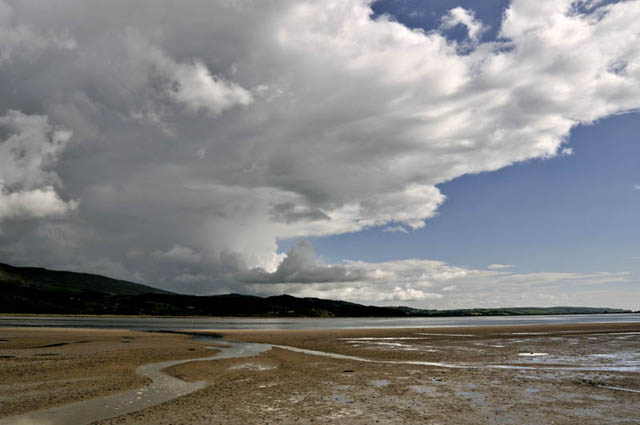 Here with a bit of foreground: this upper section of the estuary carries little seaweed, but saltmarsh-grasses form scattered patches on the muddy sand along its fringes. The tide was just starting to flood when I took this. To the south, on the fringes of the channels, several white Egrets were wading. They are beautiful, graceful birds that seem to have increased in numbers in recent years. An embarrassingly-long lens would be needed to get a decent photo, of course: something for the wildlife specialist!  With the sun on the marshes and the sea-wall boulders in the foreground and the cell beginning to reach the mature stage, the sight was quite dramatic for a few minutes....  ....before it started to rain itself out, the downdraught choking the updraught and a weak gust-front starting to form, which headed in my direction, bringing an end to the photogenic stage of the cell. As it dissipated, half an hour later, it considerately passed straight over my veg-garden, saving me one watering-session!  The next two sets of images concern fishing trips that coincided with sightings of that unusual cloud-formation, Kelvin-Helmholtz waves. The first sighting was from the Stone Jetty at Aberystwyth, when a series of lenticular clouds developed over the hills to the east: 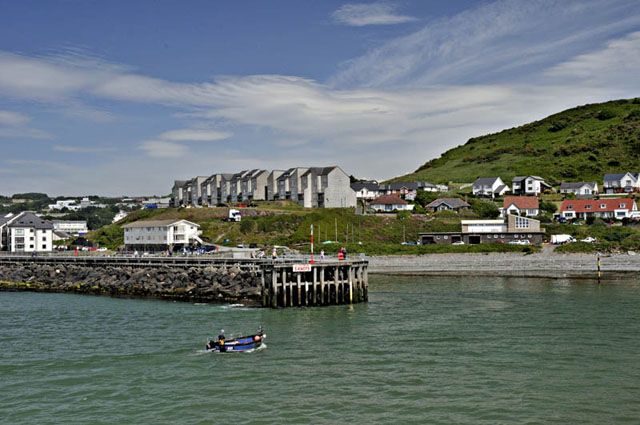 In this zoom-in the waveforms can be seen more clearly: 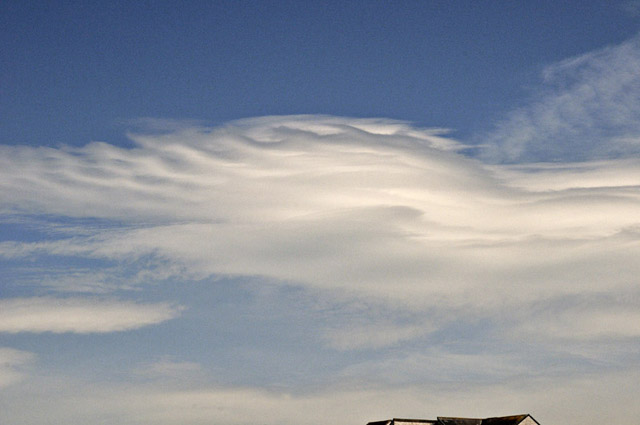 The second sighting was over Bardsey Sound. In settled weather, I try to visit this area every fortnight or so to fish for delicious mackerel and pollack, walk the clifftop paths and generally restore a sense of personal well-being, something which gazing at views like this for an afternoon does very effectively.  The mackerel are remarkably scarce this year so far and you have to work hard to catch half a dozen. I'm getting similar reports from charter-skippers fishing out of Aberystwyth. Perhaps it's the long cold winter, perhaps it's industrial-scale overfishing, or a bit of both? I do recall similar poor years going back two decades or more, though. Those I have been catching have been of a good size, and there is no better food than a mackerel caught and eaten within hours, provided - and it's critically important - that you look after the catch - placing them in the shade with a pale cloth over them is a good move. In the treacherous, current and swell-ridden waters of Bardsey Sound, local potters were at work: 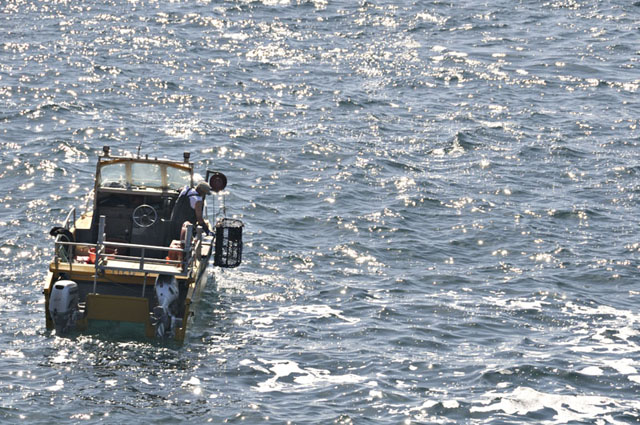 You need to know what you are doing to make safe passage through this - the ebb-tide rip-current that forms twice a day off the SW tip of the Lleyn Peninsula. This is on a good day - with wind against tide, a Spring tide and a bigger swell, a series of steep, multi-metre high stopper-waves with foaming, breaking crests forms - you would then have a job taking a boat twice this size through. 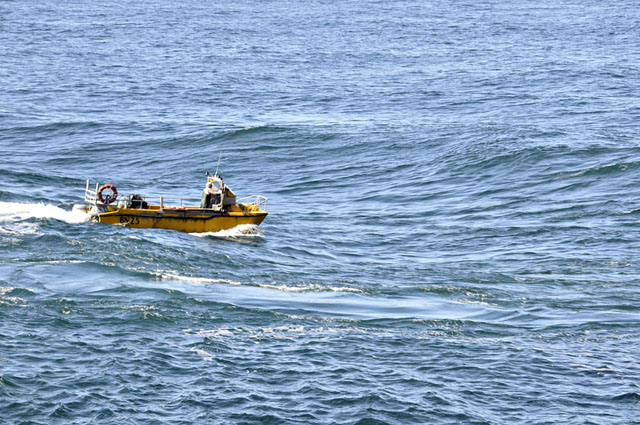 Again, Kelvin-Helmholtz waves formed, this time atop a bank of cirrus: 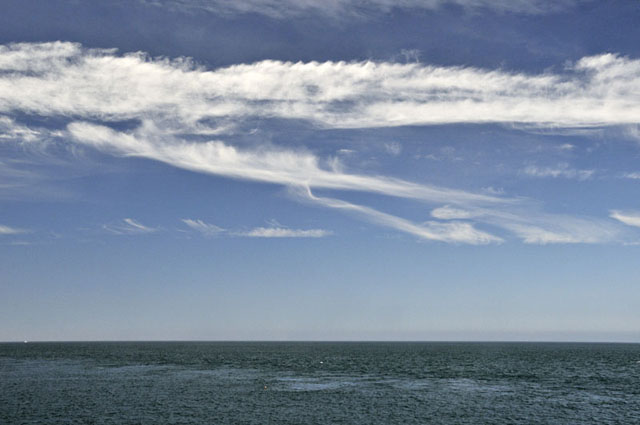 Here zoomed-in: 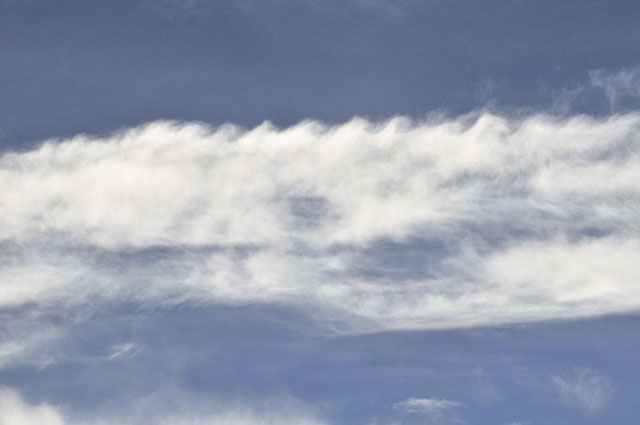 Kelvin-Helmholtz waves occur when speed-shear is present across the interface between two air-layers. What this means is that: 1) there is stratification in the atmosphere i.e. there is a sharp atmospheric boundary present like a temperature inversion; 2) the layer of air above the inversion is traveling faster than the one below it. Just as a strong wind passing over the sea whips the sea surface up into waves, the faster air traveling over the slower air has the same effect; 3) if, and only if, there is sufficient moisture present in the air-layer being disturbed from above, the shear-waves can be seen as these clouds. Given the parameters that need to come together, it is not surprising that such cloud formations are uncommon! Leaving Bardsey Sound, and the view across to the island's lighthouse, fresh fish in rucksack, mental batteries recharged for a few more weeks.... 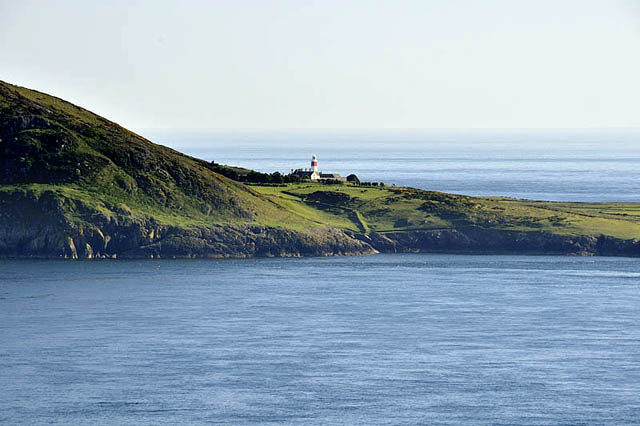 As a lot of the photos of my garden show, it is near Dyfi Bridge - the 205-year-old road crossing of the river is the first one above the sea. It has been in the news recently due to yet another lorry colliding with its side. Such clouts happen quite often, perhaps bearing testament to the fact that this latest version of the bridge was designed way before articulated lorries first appeared on a drawing-board somewhere. This one, however, was bad. 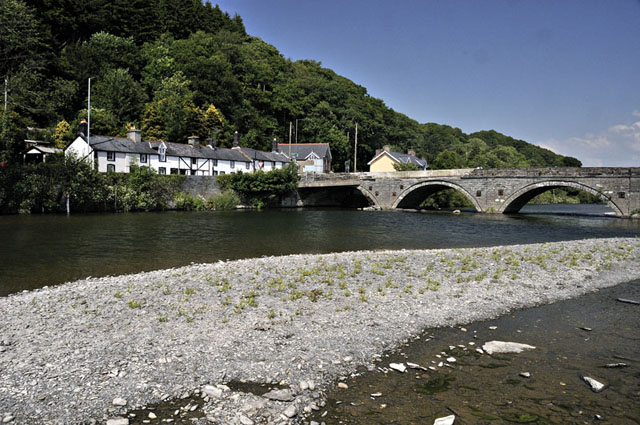 This zoom-in shows the best part of a third of the wall gone - the stones are below in the river.  Here's a view from the other end. This is the worst damage I have seen, and has necessitated 3-way traffic lights which look set to be there for some time. The bridge is currently closed to HGVs but open to lighter traffic. 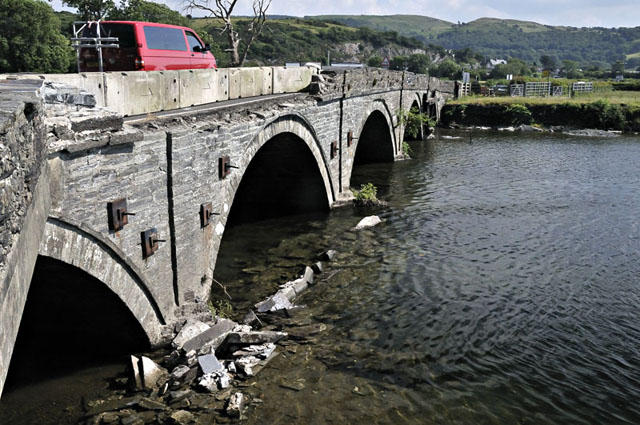 In the garden, I picked the last of the broccoli but left the plants to flower whilst away in Orkney - something that the bees appreciated: 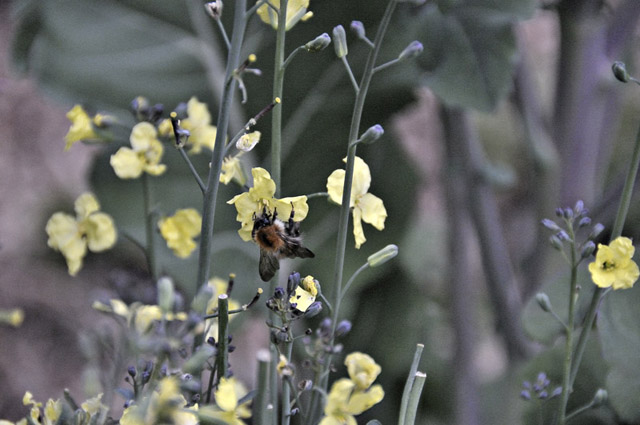 The "whatever comes up" corner is ablaze with foxgloves, campions and cranesbill while mulleins are just coming into flower. To the R the long, lanky sallow tree that I coppiced last back end is bushing out thickly. Butterflies, hoverflies and bees are all being attracted to this patch in good numbers! 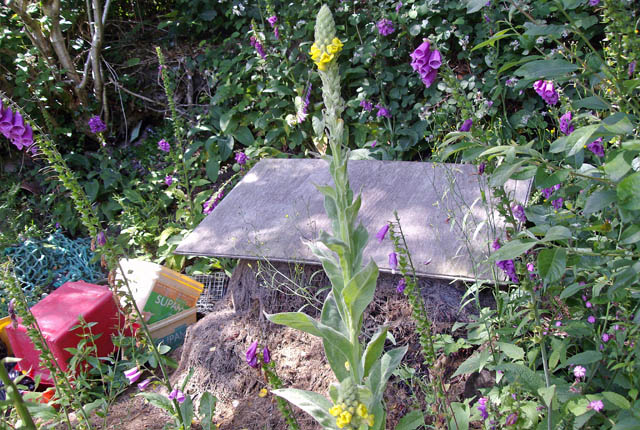 The compost-heap is a good size already, augmented by the lawn-cuttings from the large beer-garden at my local. On returning from Orkney a major weed-cull was required as they had a) finished flowering and were b) totally swamping some areas. To get this useful biomass rotting nicely, the heap was capped-off with eel-grass, a long, bootlace-like seaweed that has been washing ashore along the coast in huge amounts in recent weeks. As it decomposes, it turns into a slimy goo which seems to get everything beneath it rotting at an accelerated rate: not only that, but seaweed is full of useful minerals so it's a handy addition either way! 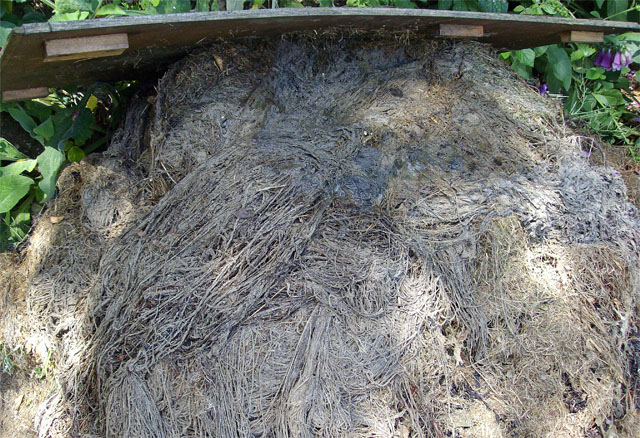 The onions (first time I've tried them) are coming along nicely..... 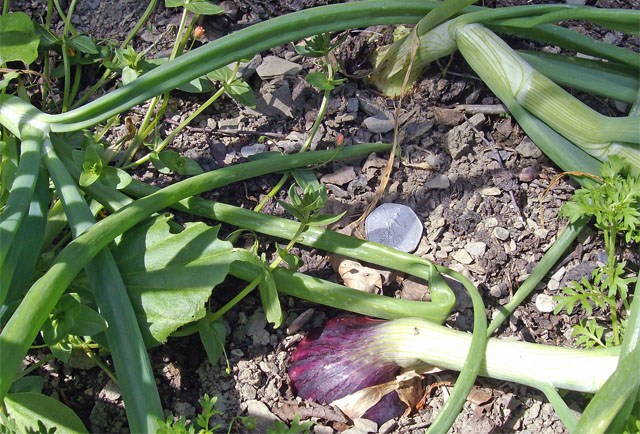 As are the shallots - this was taken in early June..... 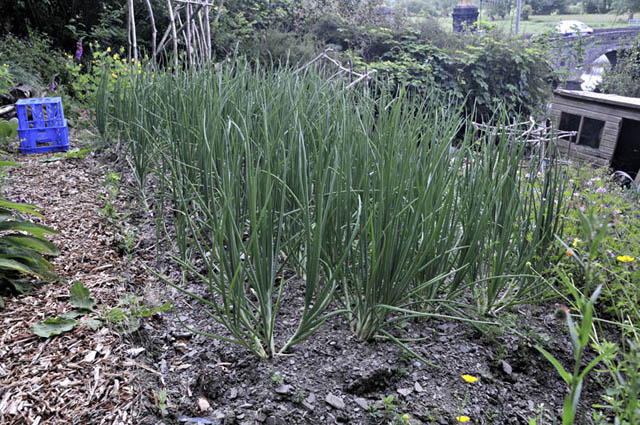 ....and this in early July. The variety is Red Sun - it was a success last year so it made sense to concentrate on it again. During the dry weather, I took care to water each plant individually at its base, letting them have the equivalent of 10mm of rainfall every 3 days. This approach seems to have worked and it also conserved scarce water resources. The relief at the transition to a more mobile, westerly airflow regime was profound, with useful rainfalls every few days gradually bringing things back to normality. 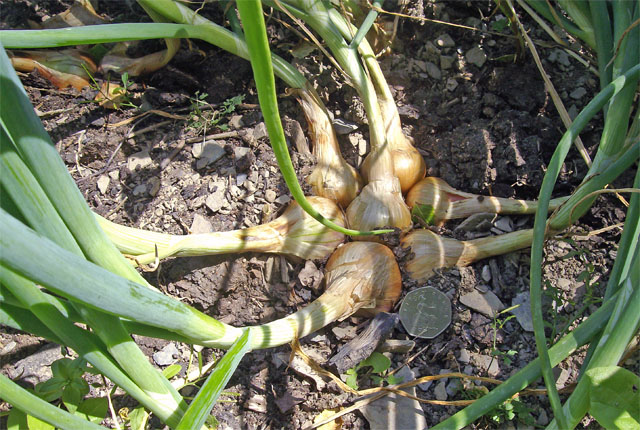 Runner
beans are coming along after a slow start due to the dry conditions.
This year I'm also trying French beans, but had a very low
germination-rate, a bit of a mystery. Soon, I will be sowing broccoli,
leeks, chard and a few other bits and pieces, ready to go into the
spaces created when the shallots and potatoes are harvested: Plan A is
to have something fresh available every week of the coming winter - it
makes a massive difference both in food quality and in the pocket!
|
|
BACK TO WEATHER-BLOG MENU New! Fine Art Prints & digital images for sale- Welsh Weather & Dyfi Valley landscapes Slide-Library - Click HERE |